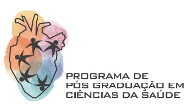Banca de QUALIFICAÇÃO: ADRIELE PANTOJA CUNHA
Uma banca de QUALIFICAÇÃO de MESTRADO foi cadastrada pelo programa.STUDENT : ADRIELE PANTOJA CUNHA
DATE: 03/06/2024
TIME: 14:30
LOCAL: Laboratório de Ensino de Biologia 01 - ICED-RONDON-UFOPA
TITLE:
“MERCURY CONCENTRATION IN PUERPERAL WOMEN AND NEONATES RESIDING IN THE CITIES OF SANTARÉM AND BELTERRA, PARÁ”
KEY WORDS:
Biomonitoring. Postpartum women. Amazon Poisoning. Heavy metals.
PAGES: 50
BIG AREA: Ciências da Saúde
AREA: Saúde Coletiva
SUBÁREA: Epidemiologia
SUMMARY:
Introduction: Mercury (Hg) is a chemical element that can be found in nature in organic, inorganic and metallic form. Currently, this metal is among the main contaminants in the Amazon, being used to extract gold and consequently contaminating soils, rivers and humans. Human poisoning occurs mainly through dietary exposure, through the consumption of fish contaminated with methylmercury (MeHg), one of the most toxic Hg compounds for living beings. Women of childbearing age, pregnant women and fetuses are considered the most vulnerable to contamination, since MeHg can cross the placental barrier and affect the fetus's central nervous system, causing severe problems. Objective: To evaluate whether Hg concentrations in pregnant women and newborns, cared for by the public health system in the cities of Santarém and Belterra, are within the limits established as safe. Material and Methods: This is a sectional, prospective study, with a descriptive-analytical profile, carried out in the years 2023 and 2024, through bibliographic review and field and laboratory research. The sample universe consisted of 122 participants (Santarém, n=100 and Belterra, n=22), using samples of hair, nails, placenta (maternal), umbilical cord and umbilical cord blood (neonates) as biomarkers for Hg analysis. collected from postpartum women and newborns treated in public hospitals in the cities of Santarém and Belterra. The collection of biological samples and application of the bio-socio-environmental questionnaire began only after approval by CEP/UFOPA under CAAE: 94880318.9.0000.5168 and signing of the Free and Informed Consent Form (TCLE) by the participants. Partial Results: One hundred percent of the hair samples collected in Belterra have already been analyzed and the results associated with the answers obtained from the bio-socio-environmental questionnaire. Among these, the majority reported consuming non-piscivorous fish. In Belterra, the average MeHg in hair was 1.04 mg/kg and of the total sample, 22% are at potential risk from the effects of MeHg on the health of newborns. Partial considerations: In general, puerperal women from Belterra fed on non- piscivorous fish species and still obtained Hg concentration results above those recommended by Regulatory Agencies. Therefore, these results already indicate an important warning to estimate the degree of exposure of these women and focus on measures to minimize the risks of exposure.
COMMITTEE MEMBERS:
Presidente - ***.421.662-** - SANDRA LAYSE FERREIRA SARRAZIN - UFPA
Interna - 2383596 - HELOISA DO NASCIMENTO DE MOURA MENESES
Interna - 3302208 - ELIZA MARIA DA COSTA BRITO LACERDA




